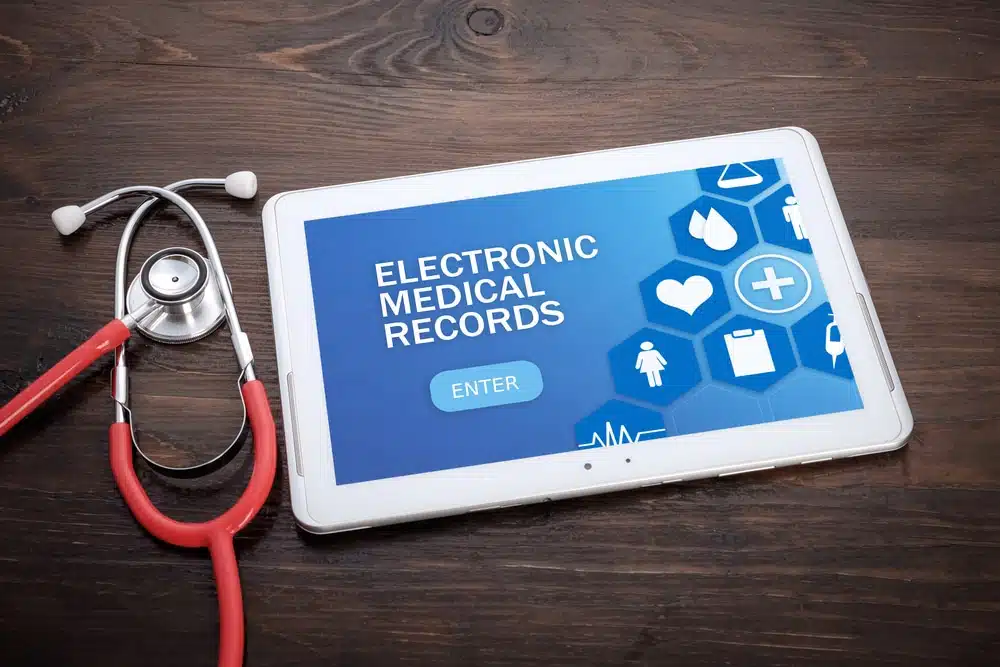Electronic Health Record Issues Serve Important Purpose in Malpractice Cases
An American Journal of Emergency Medicine study found an emergency room doctor will make approximately 4,000 computer clicks related to electronic health or medical records (EHR) over the course of one single shift. Although the evolution of a medical record turned electronic has been positioned to save money, eliminate mistakes in medicine and bring higher-quality and transparent care to patients, the painful truth and untruths of EHRs and related technologies continue to be known as physicians express angst and sometimes fear of using the systems.
Today, 96 percent of hospitals have adopted the patient and medical care tracking technology so there is no doubt room for user error sits ever-so present for billions of Americans, putting them at risk for death and serious injury. Software glitches and other flaws can also go unseen and contribute to disastrous patient safety and privacy issues.
Examples of EHR Challenges That Lead to Patient Injury or Death
The American Medical Association (AMA) identifies these seven challenges and examples related to EHRs, mostly involving safety and usability challenges for physicians, both areas where mistakes can lead to patient injury or death.
- Data entry example. AMA researchers reviewed a case where a clinician chose the wrong frequency for a drug to be administered because the clinician didn’t realize that the order in which the options were populated into the EHR had changed.
- Alerting example.A report showed that even though a patient’s gelatin allergy was listed in the EHR, a clinician wasn’t alerted to the allergy while prescribing a medicine.
- Interoperability example.Communication of information in an EHR may be hindered because interoperability is inadequate within components of the same EHR or from the EHR to other systems. In one case, clinicians couldn’t access labs for a hospital patient from records held in a different part of the hospital.
- Visual display example.Clinicians may find it hard to interpret information because EHR displays are confusing, cluttered or inaccurate. For example, a clinician tried to order 3.125 mg of a medication, but the EHR listed only a 6.25 mg prescription, with a 3.125 mg dose listed in small print, confusing the clinician.
- Availability of information example.A hospital lab staffer couldn’t access a section of a patient’s health record where the clinician ordered diagnostic tests; consequently, the tests weren’t performed.
- System automation and defaults example.A clinician ordering an anticoagulant tried to start the dosing at a set time, but the date automatically defaulted to the following day because EHR automates information that is unexpected, unpredictable or not transparent.
- Workflow support example.A physician ordered diagnostic tests and included instructions for the lab in a special instructions field, not knowing that the lab staff couldn’t see that information. Consequently, the tests weren’t conducted.
When a patient is injured or dies as a result of medical error, the major question is always “Who is responsible?”. Medical records are perhaps the most important piece of evidence in most Illinois medical malpractice and personal injury cases. Only a skilled and experienced attorney can help determine who is truly at fault.
Who is Responsible for Medical Report Errors?
If you or someone you love has been injured as the result of a medical error, figuring out where things went wrong and determining liability can be extremely complex. The medical malpractice attorneys of Levin and Perconti have over 130 years of combined medical malpractice experience and have been a force in courtrooms throughout Illinois for over 30 years, achieving nearly $700 million in verdicts and settlements.
Our attorneys are committed to finding the truth and securing the best possible result for you and your loved ones. Please, contact us for a free consultation by calling 312-332-2872 or completing our online case evaluation request form.



